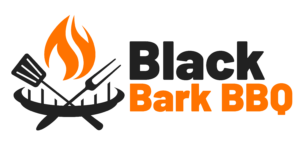I love to cook a meal for the holidays. You always need the turkey. I like making a good BBQ brisket as well – Action Bronson
One of the things that no one tells you when you start your journey down the path to smoking success is that there isn’t a definitive handbook that you can flip through and refer to whenever you’re looking for an answer to a troubling cooking conundrum.
Most of the time you’ll end up flying by the seat of your pants while you discover what does and doesn’t work for you and the times and temperatures that’ll transform everything that you smoke into a culinary work of art.
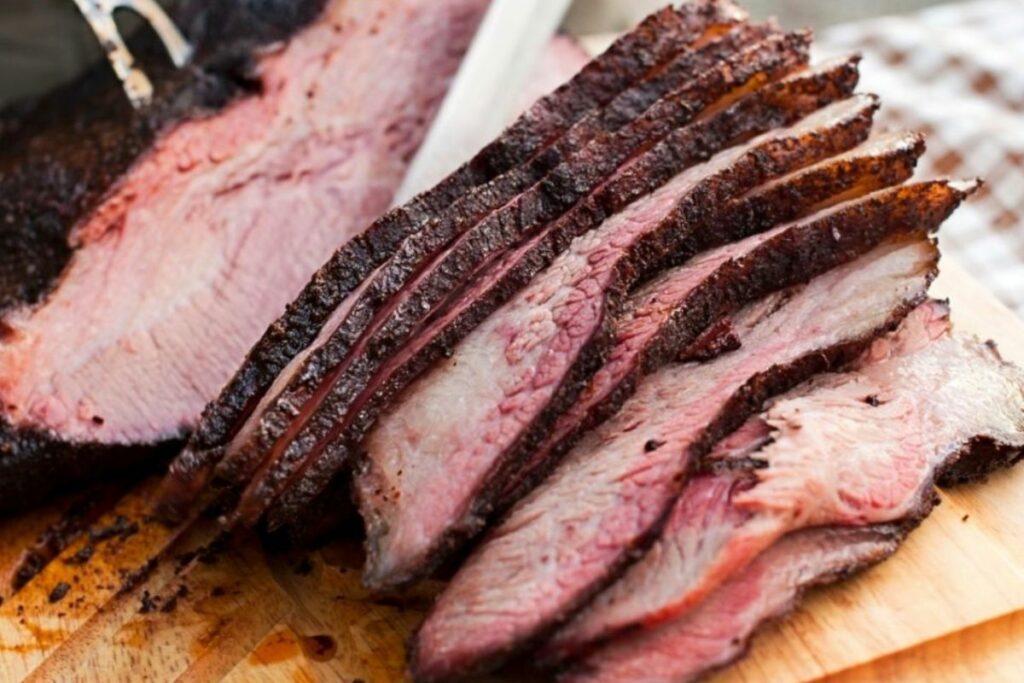
There are, however, exceptions to the “smoke it and see” rule that governs the lives of most grilling, barbecuing, and smoking fanatics, and the most steadfast of those oddities and abnormalities is the indispensable guide to smoking a good brisket.
While it usually takes a lifetime to cobble together the facts and figures from the tidbits of advice that you’ll pick up from hanging around other smokers, we thought we’d bypass the conventional way of doing things, cut straight to the chase, and share everything that we know, and everything that you’ll ever need to know, about how to smoke a great brisket.
And if you follow our step-by-step guide and rules, the brisket that you smoke won’t just bring all the boys to the yard, it’ll drag everyone who lives within a ten-mile radius of your backyard barbecues and cookouts there too. Are you ready to become a smoking sensation and for your brisket to become the stuff of legend? Then let’s begin…
What Is A Brisket?
Before we start, we thought it would be prudent to explain what brisket is and why it can be a smoker’s best friend, and with the right kind of care and attention can become one of the best barbecue and surprising smoked delights that you’ll ever eat.
Brisket is one of the nine prime beef cuts taken from a cow. And even though the term “brisket” can also be used to describe a cut of veal, for the sake of smoking, your pocketbook (veal is INCREDIBLY expensive) and because it’s not exactly fashionable, we’re going to ignore veal and for the sake of this feature and your smoking future, we’re just going to use brisket to talk about beef.
Back to the nine prime cuts. Brisket is taken from the breast of the lower chest of a cow, and because of its location on the animal, it isn’t the tenderest cut of meat available.
Because of its reputation, brisket is a readily affordable cut of beef, and as it can be changed from a restaurateurs last choice to a smokers cut of choice with a little grilling and barbecuing magic, it’s become a staple part of the barbecue experience and a go-to cut for anyone looking to flex their smoking wings and venture beyond the boundaries of the burger brick wall and the frankfurter fence.
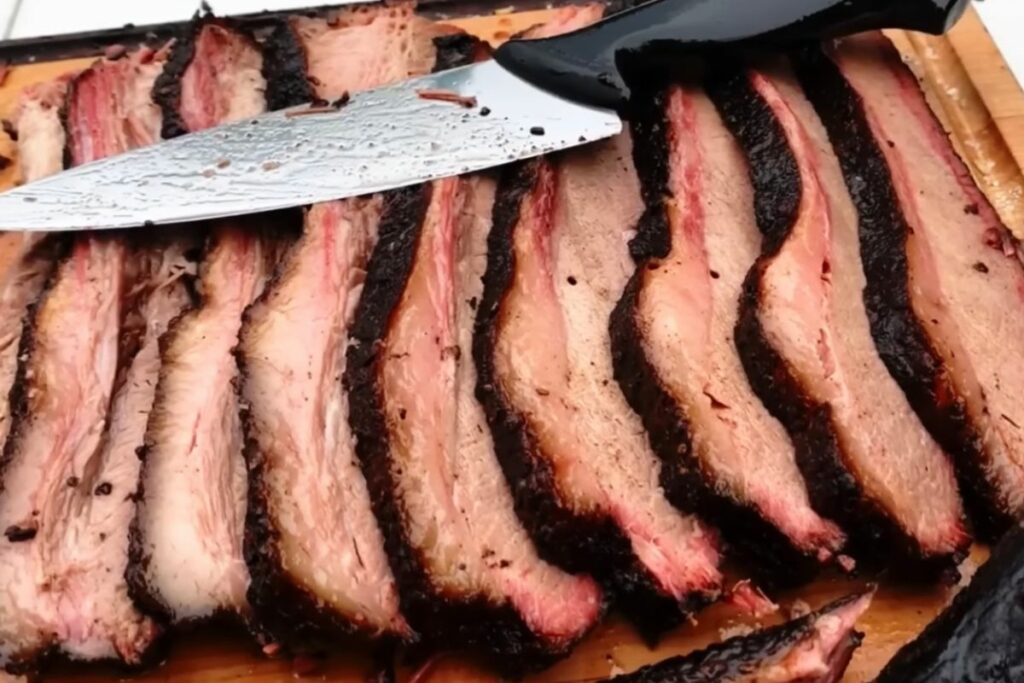
The General Rule Of Thumb For Smoking Brisket
First things first, let’s cut straight to the chase and get right to the heart of the matter. When it comes to smoking brisket there is a general rule of thumb that everyone tends to defer to. And that unwritten law is this – it takes an hour per pound to smoke a brisket.
That means that if your cut weighs two and a half pounds, it’ll take roughly two and half hours to smoke it from the moment that your smoker gets up to temperature.
Obviously, it’s a little more complicated than that, but as long as you remember the hour per pound rule, even if you forget everything else that we’re going to tell you, you should be okay and more importantly, so should your brisket.
Patience Is A Brisket Virtue
Now that we’ve cleared up the whole old wives brisket tale, the next thing that you need to know about smoking a good brisket is that it takes time. You’ll need to prepare yourself for the long smoking haul if you want to serve up a cut of meat that will melt in the mouths of your family and friends.
Rome wasn’t built in a day, but you can smoke a good brisket in that time, so it isn’t all bad news. But learning to be patient and playing the brisket waiting game is something that you’ll need to master. It’s an unfortunate reality of the smoking life and one that you’ll need to get used to as quickly as you can.
The truth is, while the steadfast rule is one that tends to usually work, cuts of brisket are like snowflakes. They’re all individual, which means that it could take anywhere from forty-five minutes to three hours to smoke a similar-looking cut of meat, because of a whole host of different factors that we’re about to guide you through and explain.
Weight And Size Matter
We’ve already skirted around the fact that no two cuts of brisket are the same, and while they might look similar, they won’t be the same weight, and if they’re not the same weight, it’ll take longer to smoke the heavier cut.
Similarly, even if two cuts do weigh the same, if one is thicker and smaller in size than the other, it’ll take longer for the rich, dense smoke-filled flavor that you’re cooking it with to soak into it.
And the only way that you’ll really be able to guestimate how long it’ll take to smoke each cut, is by using the weight to cooking time equation and with experience. The more brisket you smoke, the more adept that you’ll become at being able to know when it should be ready.

The Fat Content Factor
The amount of fat in a cut of brisket can also significantly affect the cooking time. Fat doesn’t just add flavor to brisket, it also acts as an insulator, capturing the heat that you’re cooking with and holding onto it, which means that the higher the fat content in your cut of brisket, the faster it’ll cook.
Before you start prepping your brisket, give it a cursory examination and take the fat content into account. Again, there’s no definitive way to calculate how the amount of fat will reduce the amount of time that it will take to smoke your brisket.
But as long as you remember that the more fat it contains, the shorter the smoke time, you should be able to factor it into your cooking calculations.
Know Your Smoker
The more familiar you are with your smoker, the more prepared you’re going to be to smoke a great-tasting brisket. Much like individual cuts of brisket, no two smokers are the same and the amount of time that it takes them to reach the ideal temperature to smoke at is something that you’ll need to consider.
It’s important to know that the time it’ll take your brisket to smoke starts when your smoker reaches the right temperature. That means you’ll have two choices.
You can either wait for your smoker to get up to speed and hit the magic number that you want it to reach and then put your brisket on one of its racks and start your smoking stopwatch or you throw the brisket in your smoker before you fire it up, but if you do you’ll need to remember to only star the smoking countdown from the moment your machine reaches the right temperature.
It sounds like a lot to take in, but as long as you only start the timer when the right number appears on the temperature readout, you won’t need to panic or worry about your brisket, as the key smoking ingredients are heat and time. Everything else is just about taste and experience.
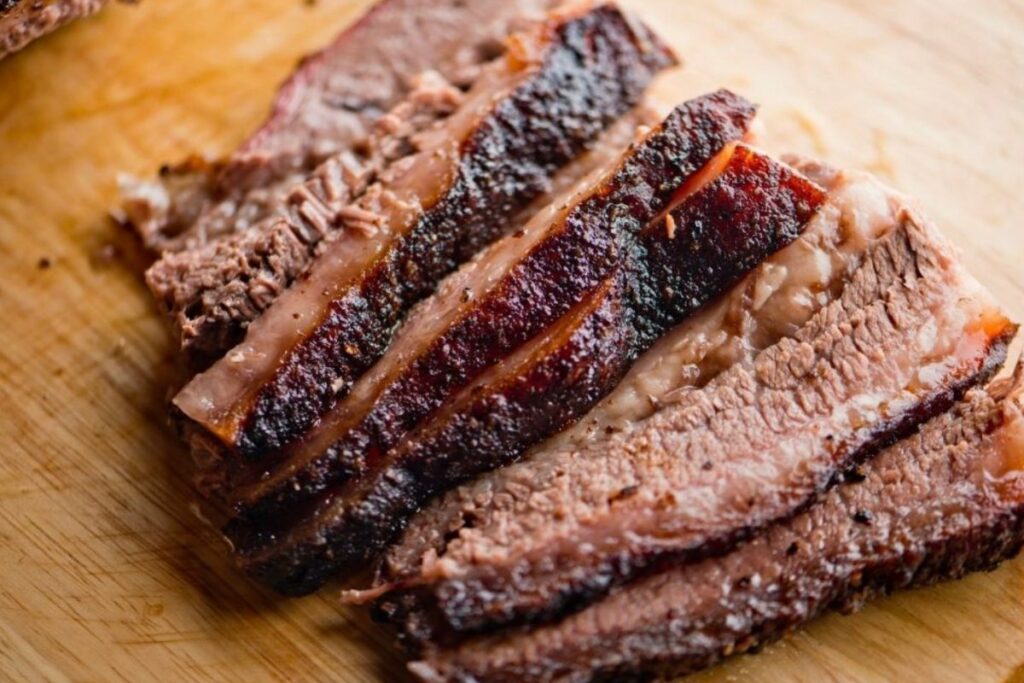
Getting The Heat Right
We’ve mentioned how important it is to get the temperature right, so we’ll just cut the flim-flam and smoking techno-babble and tell you that the ideal heat to smoke brisket at if you’re following the long, low, and slow method is two hundred and fifty degrees Fahrenheit.
That’s the heat that you’ll need to keep the temperature inside your smoker at if you’re going to adhere to the hour per pound cooking rule. As soon as your cooker hits that figure, the smoking fun can start.
There are a couple of other temperature-related factors that you’ll need to take into account before you start smoking a brisket.
If you take the cut straight out of your refrigerator and throw it in your smoker, it’s going to take longer for it to cook than it would if you’d left it to rest on the kitchen countertop or on a table outside for a couple of hours before you start cooking it.
The ambient temperature of the brisket can impact the smoking time, which is why we’ve always taken any cut of brisket that we’re going to smoke out of the fridge and left it to rest for a couple of hours before we’re ready to fire up the smoker.
The colder the cut is before it goes into a smoker, the longer it will take to smoke, so always make sure that any brisket that you’re going to barbeque or smoke is at room temperature before you start cooking it, and the hour per pound rule will come into immediate effect.
Speeding Up The Smoke
You’re probably asking yourself something along the lines of “But can’t I just turn the temperature of the smoker up to cook the brisket faster?” And truthfully, yes you can, and as long as you’re prepared to keep an incredibly close eye on the contents of your smoker if you choose to follow that course of action.
The higher heat can and will cause your brisket to dry out and won’t give it the time that it needs to fully absorb all of the extreme flavors from the smoke that you’ll want it to.
It’s the eternal dilemma that all smokers have to face at one time or another – do you sacrifice flavor for expediency or trust that the process will work? Unfortunately, you’re the only person who can make that decision, but it isn’t a “smoking” path that we’d advise you to follow.

The Texas Crutch
There is an easier way to speed up the smoking process, and it’s one that’s guaranteed to seal all of the natural flavors of the fat and any rubs or marinades that you’ve used into the brisket that you’re cooking. It’s called the “Texas Crutch” and it involves wrapping your brisket in aluminum foil before you start cooking it.
The idea is thought to have originated at barbecue and smoking competitions in the South and was used to speed up the cooking time, and seal in the flavor of the meat without letting it dry out so that the participants could prepare more food for the judges to sample, hence the name “Texas Crutch”.
Essentially, the foil wrap or crutch cooks the meat in its juices and ensures that it won’t dry out, but it isn’t a method that appeals to a lot of die-hard smokers who argue that it’s better suited to barbecue than smoking.
Why? Because sealing a brisket in foil and letting it cook in its juice and pre-prepared rubs and marinades sacrifices the bark that it would get if it was smoked the traditional way and, more importantly, if a brisket is wrapped in foil it can’t absorb any of the flavors from the smoking process, which makes smoking it redundant.
If you’re going to use a Texas Crutch, you might as well cook your brisket in an oven, or a grill. A wrapped brisket isn’t a smoked brisket, it’s a barbecued brisket, even if you cook it long, low and slow.
Preparing A Brisket For Smoking
Are you still with us? Good, we’d hate to think that we lost you somewhere along the way, and the fact that you’re still here means that you’re as committed to smoking great brisket as we hoped you would be.
And because you’ve stuck with us, we’re going to give you some additional tips that’ll help you to prepare your brisket for smoking.
Trimming And Cutting
The first step on the road to brisket perfection is ensuring that it’s been trimmed correctly. If there’s any hard fat on the outside of the cut, carefully cut it away, as it won’t add to the flavor of the cut when it’s being smoked.
However, make sure that you don’t try to cut out any of the fat that’s marbled into, and through the cut of meat, as it will ADD to the flavor. The golden fat trimming rule is hard bad, soft good. Keep it in mind when you start cutting, and all will be well.
Marinating It
Are you a marinade fan or a rub-friendly smoker? If you’re the former, it’s important to prepare your marinade in advance and let your brisket soak in it for at least twelve, preferably twenty-four hours before you start smoking it.
And the time that it spends soaking in the marinade should be spent in the refrigerator, which means that you’ll have to take the brisket and marinade out of the fridge at least two to three hours before you start smoking it.
And then you’ll need to take the brisket out of the marinade an hour before you place it in your smoker. Remember what we told you about ambient temperature? You do? Good.
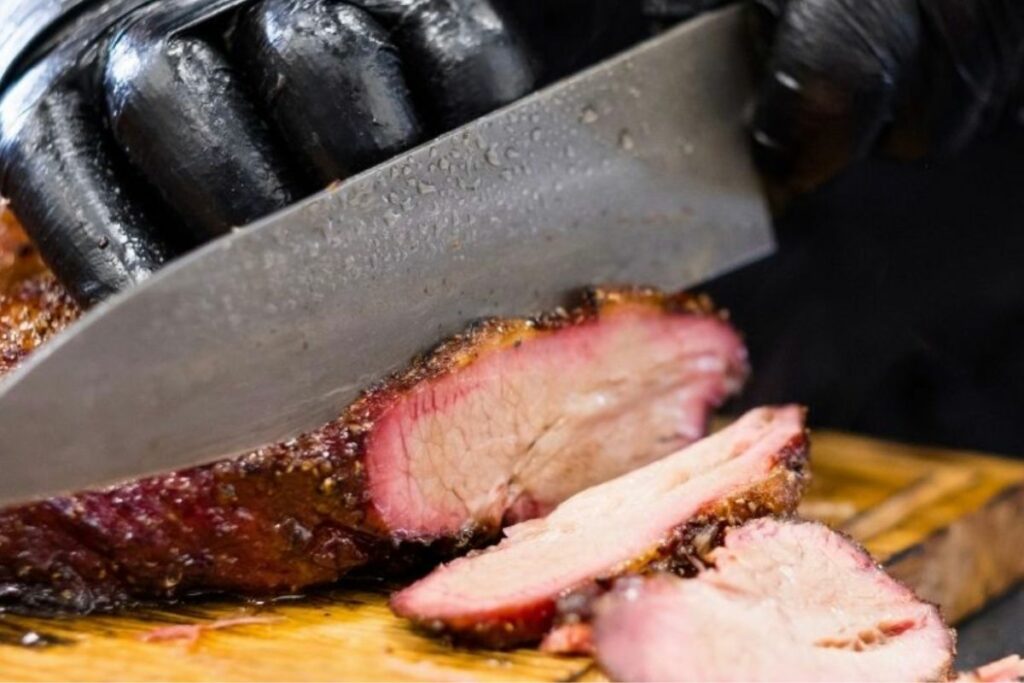
Rubbing A Brisket
If however, you’re a rub kind of smoker, prepare your rub in advance and before you start kneading it into your meat, use a knife to lightly score the surface of the brisket. That way, when you add the rub it’ll be absorbed into the meat and won’t just form a bark, but will infuse the entire brisket with flavor.
And once you’ve finished adding your rub, let the brisket sit for an hour before you start smoking it. Trust us, you’ll be glad that you did.
The Smoke
The pellets or charcoal that you’re going to use in your smoker if you’re going to cook brisket are vitally important. Charcoal always works well, as it has a deep, almost burned taste, but the choice of pellets is crucial, as they need to produce a strong, rich smoke if they’re going to add to the already hearty taste of your brisket.
Knowing When Your Brisket Is Ready
After you’ve spent a couple of hours preparing your brisket and between one and however many hours it needs according to its weight smoking it, the last thing you’ll need to know before your break it out of your smoker and start carving it up and eating it is when your brisket is actually cooked and ready to be served to your family and friends.
As well as keeping an eye on the time, you’ll need to keep an eye on the temperature of your brisket. Ideally, it should be between one hundred and ninety and two hundred and five degrees, and the easiest way to check that it is is with a meat thermometer.
When you think it should be ready, use the thermometer to check the temperature of your brisket, and if it isn’t quite right keep on checking it every twenty minutes until it is.
As soon as the brisket is ready, let it rest for between forty-five and seventy-five minutes, as this will give the juices and fat a chance to completely and thoroughly soak through it while it’s cooling. And when it’s spent an hour or so resting, your smoked brisket will finally be ready to eat.
The Final Word On Smoking Brisket
We know, it’s been a long ride hasn’t it? But, now that you’ve reached the end of it, you know everything that you need to in order to smoke an INCREDIBLE brisket. Who knows, maybe one of these days we’ll even get to taste your brisket…
- Is Blue Steak Safe To Eat? - May 7, 2022
- How To Tell If Your Bratwurst Sausage Is Cooked - May 7, 2022
- The Internal Temperature For Tri Tip When Done - May 7, 2022
